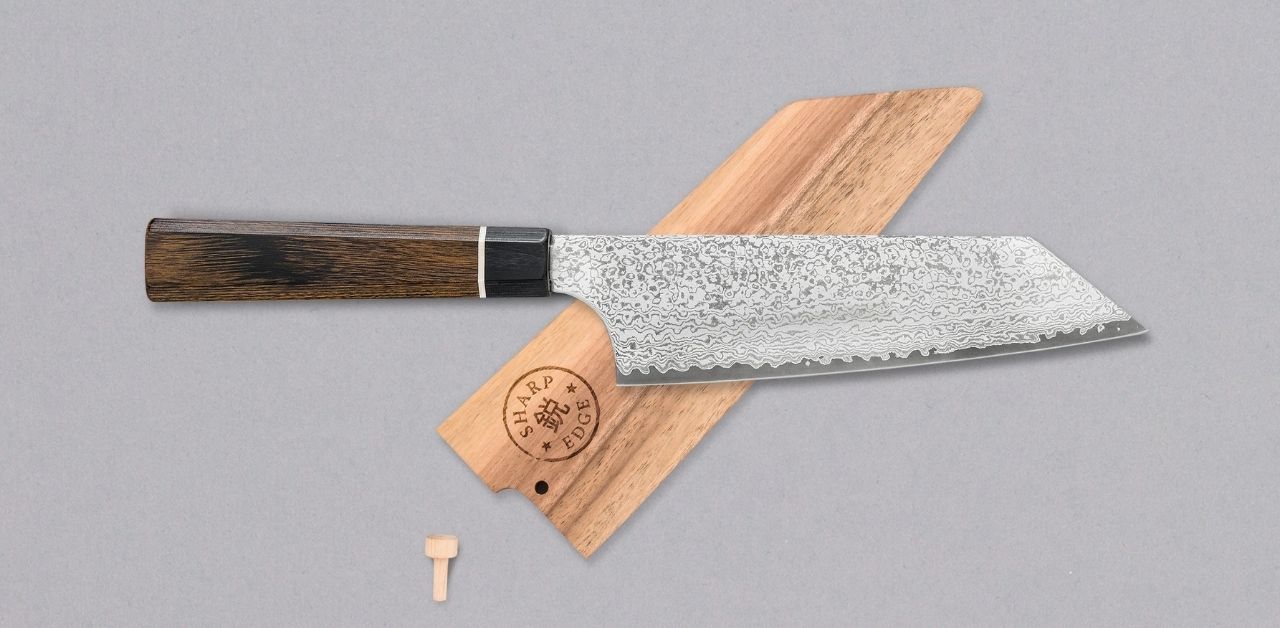The only way I can stop myself is if someone stops me, I will continue to collect Japanese knives. A recent addition to my collection is the well-known Bunka knife that is very versatile.
There are a variety of uses for the Bunka knife as it is a multi-functional Japanese knife that is similar to the widely popular Santoku knife however its tip is pointed instead of curved like the Santoku knife’s.
Nevertheless, what exactly is the purpose of a Bunka knife?
The Bunka knife is designed to be versatile for everyday use in the kitchen. Despite its straight, curved edge, and pointed tip, this knife is quite effective at piercing and precision slicing due to its straight, sloping curved edge and curved slope.
I will be examining in detail the Bunka knife, how to use it, and the things that you can do with it.
The History of Bunka Knives
The word bunka means culture. According to my knowledge, “Bunka b*ch*” is literally translated as “cultural knife.”.
In spite of the fact that the translation is correct, it is up to the reader to interpret the meaning. It is believed by many people that this means that the knife is suitable for making traditional Japanese cuisine in any home, regardless of its state of use. I believe it is actually the other way around even though this is certainly a fair and reasonable thought.
In the modern world, a Bunka knife brings traditional Japanese craftsmanship and culture to a kitchen regardless of the type of food, the chef’s experience, or the location.
Japanese food purity laws forced the introduction of the Bunka knife in the late 1860s. In Japan, the idea that there is a knife for every purpose led to the development of a lot of specialty knives that are still used today in the kitchen, such as the Nakiri knife for chopping vegetables, Deba Knife for slicing raw fish or Yanagiba knife for cutting sashimi or sushi.
In theory, Bunka knives were a kind of multi-purpose knife, similar to a Santoku knife or a Gyuto knife where the specialized knives were used for specific tasks, while a more versatile knife was used for general purposes.
Bunka Knives: What Are They?
Depending on whether the knife has been sharpened on one side or both, Japanese knives can be single-beveled or double-beveled. A traditional knife usually has a single bevel, and a modern Japanese knife typically has a double bevel.
Japanese kitchen knives with sharply angled tips are called Bunka, double-beveled knives. The Bunka knife is considered a modern knife despite its piercing appearance reminiscent of the traditional Katana.
In addition to the slight differences between the knives, the most distinguishing characteristics between the Santoku and the Bunka are the tips of the blades. As opposed to a curved sickle-shaped tip, the Bunka has a reverse tanto-shaped tip. As a result of this minor exception, the Bunka comes with similar advantages in the kitchen to the Santoku.
The length of a Bunka knife ranges from 120mm to 240mm. In order to get the good balance and use it for a variety of purposes, the Bunka knife blade length that most people are comfortable with is around 165mm.
The Bunka knife has tougher steel, is sharper, and is crafted with exquisite craftsmanship, compared to Western knives like the chef knife.
How Does a Bunka Knife Work?
For instance, there are general-purpose versatile knives which can be used for everyday kitchen tasks, like filleting fish or cutting vegetables. There are also Japanese knives for specific tasks, such as filleting fish or cutting vegetables.
Almost any kind of knife can be used with the Bunka knife, just like the Western chef’s knife. Even though it is not a knife with specific functions, the Bunka knife can be used with vegetables, fruits, fish, meat, and a variety of other food items.
Its sharp tip allows it to precisely cut meats and vegetables, and its long flat blade makes slicing and chopping food easy and efficient. There’s no end to the uses of this tool.
The only exception is if you need a special knife for a certain task, such as deboning or chopping through bone, in which case you’ll need to consult your arsenal for the correct tool.
Due to their double-bevel blades, Bunka knives can be used by people of either hand.
How To Use A Bunka Knife
With their wide, tall blades, Bunka knives are ideal for cutting tasks requiring push-pull.
Here is a great demonstration in the video below:
It is handy to have a tool with a triangular sudden tip so that you can do more detailed and precise jobs, such as chopping meat, fish, or vegetables. In addition, the flat shape allows it to be more easily used for tap-chopping rather than using a rocking motion while using it.
Final Thoughts
Bunka knives are kitchen knives designed for everyday use that are a great alternative to chef’s knives and Santoku knives due to their versatility.
Bunka knives are suitable for cutting a wide variety of vegetables, meat, poultry, fruits, cheeses, and much more. Due to the reverse tanto shape and distinctive appearance of the knives, they have a dexterous tip.
Their blade design makes them perfect for cutting jobs requiring push-cutting, which is one of the most common types in every cuisine, thanks to their blade design.
Since it has such a broad range of applications, you can use it whenever and wherever you like!
